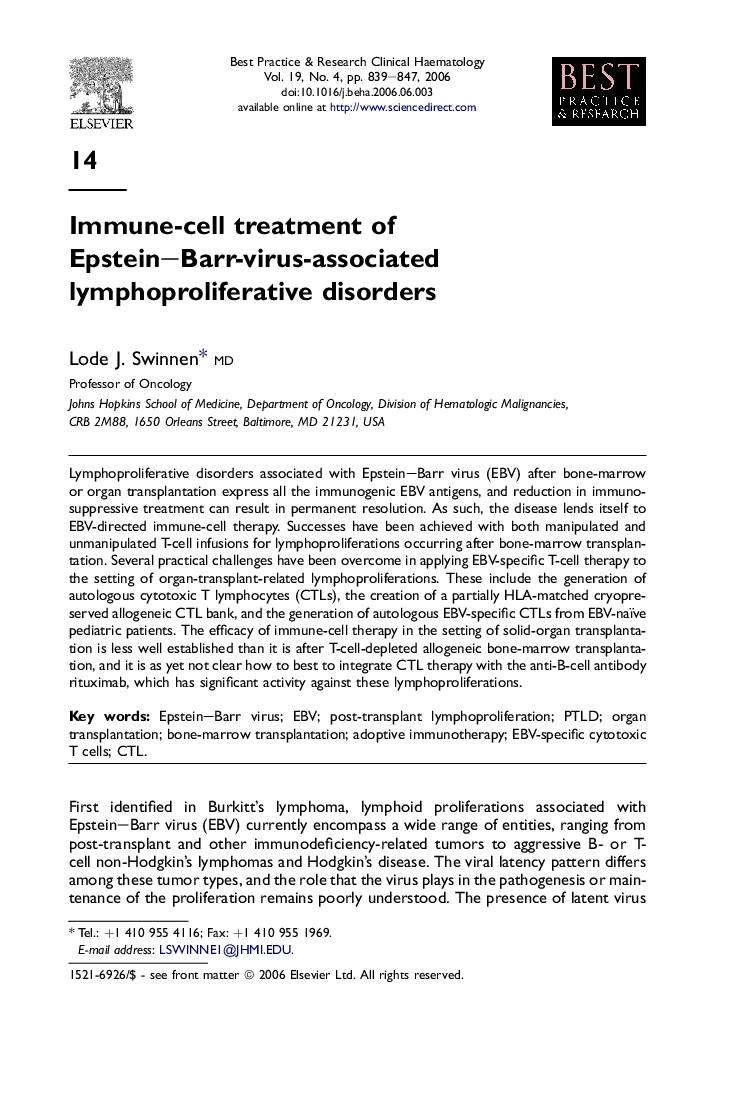| Article ID | Journal | Published Year | Pages | File Type |
|---|---|---|---|---|
| 2100611 | Best Practice & Research Clinical Haematology | 2006 | 9 Pages |
Lymphoproliferative disorders associated with Epstein–Barr virus (EBV) after bone-marrow or organ transplantation express all the immunogenic EBV antigens, and reduction in immunosuppressive treatment can result in permanent resolution. As such, the disease lends itself to EBV-directed immune-cell therapy. Successes have been achieved with both manipulated and unmanipulated T-cell infusions for lymphoproliferations occurring after bone-marrow transplantation. Several practical challenges have been overcome in applying EBV-specific T-cell therapy to the setting of organ-transplant-related lymphoproliferations. These include the generation of autologous cytotoxic T lymphocytes (CTLs), the creation of a partially HLA-matched cryopreserved allogeneic CTL bank, and the generation of autologous EBV-specific CTLs from EBV-naïve pediatric patients. The efficacy of immune-cell therapy in the setting of solid-organ transplantation is less well established than it is after T-cell-depleted allogeneic bone-marrow transplantation, and it is as yet not clear how to best to integrate CTL therapy with the anti-B-cell antibody rituximab, which has significant activity against these lymphoproliferations.
